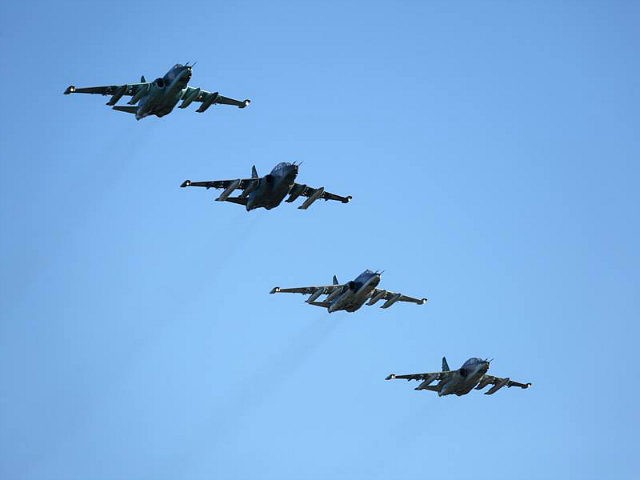The crowded Syrian skies are an accident waiting to happen between U.S. and Russian warplanes, The Wall Street Journal (WSJ) has learned from American pilots.
Last fall, a Russian fighter jet, an advanced Su-35 Flanker, came “within one-eighth of a mile—a few hundred feet away” from an American aircraft, U.S. Air Force Col. Paul Birch, commander of the 380th Expeditionary Operations Group, a unit based in the Persian Gulf, told the Journal.
“Rarely, if ever, do they respond verbally,” added U.S. Brig. Gen. Charles Corcoran, commander of the 380th Air Expeditionary Wing, who flies combat missions in a stealth fighter, referring to the Russian pilots. “Rarely, if ever, do they move. We get out of the way. We don’t know what they can see or not see, and we don’t want them running into one of us.”
Citing one U.S. radar officer, the Journal reports there are normally 50 to 75 manned and unmanned coalition aircraft flying daily over Raqqa, the Islamic State (ISIS/ISIL) de-facto capital in Syria, and about another 150 over Mosul, the jihadist group’s last major stronghold in Iraq.
Russia is not a member of the 64-nation U.S.-led coalition, which had reportedly carried out more than 51,500 sorties against ISIS, two-thirds of them by American aircraft, as of mid-December.
In 2015, a U.S.-Russian agreement established a three-mile safety distance limit between their respective aircraft over Syria.
WSJ reports:
The skies above Syria are an international incident waiting to happen, according to American pilots. It is an unprecedented situation in which for months U.S. and Russian jets have crowded the same airspace fighting parallel wars, with American pilots bombing Islamic State worried about colliding with Russian pilots bombing rebels trying to overthrow Syrian President Bashar Al-Assad. Russian warplanes, which also attack Islamic State targets, are still flying daily over Syria despite the recent cease-fire in Moscow’s campaign against the anti-Assad forces, according to the U.S. Air Force.
The U.S. and Russian militaries have a year-old air safety agreement, but American pilots still find themselves having close calls with Russian aviators either unaware of the rules of the road, or unable or unwilling to follow them consistently.
WSJ acknowledges that the Kremlin did not respond to requests for comment on the actions of its air force in Syria.
Last Thursday, an Israeli-owned firm revealed satellite images showing the deployment of Russian nuclear-capable ballistic missiles in Syria.
The images came to light shortly before the Kremlin claimed it has begun to reduce its military presence in Syria.
Nevertheless, Reuters points out, “Russia has previously failed to deliver on promises to pull back its forces from Syria,” adding, “Moscow announced a reduction of its military deployment in the country in March last year, but continued supply runs by land and air before sending significant reinforcements in October.”

COMMENTS
Please let us know if you're having issues with commenting.